02:56
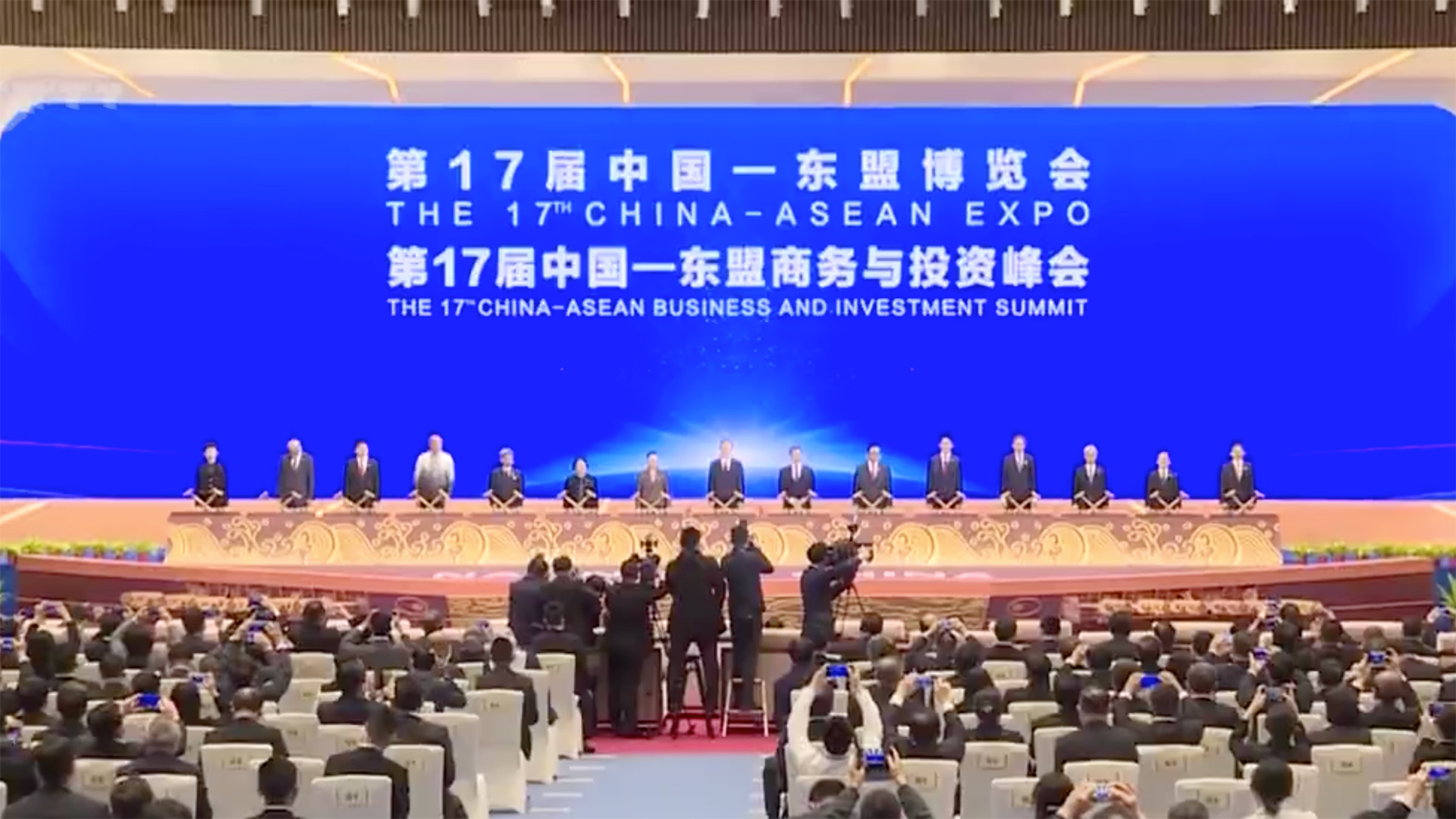
The exhibition halls at the 17th China-ASEAN Expo (CAEXPO) were buzzing with people, mostly locals, snapping up goods ranging from food pastes or pulled teas from Malaysia and instant noodles from Indonesia to red dates from South Korea.
Indonesian President Joko Widodo said in his speech via video link on the expo's opening ceremony that he believes this CAEXPO will promote economic recovery in the region in a post-COVID era.
As the fact shows that exhibitors often run out of goods early, consumer sentiments were pretty high in Nanning, capital of south China's Guangxi Zhuang Autonomous Region, where the CAEXPO was held.
Local and foreign participants also welcomed CAEXPO as a platform to boost trade between the host country and ASEAN, which, for the very first time, has become China's largest trading partner since the first quarter of 2020.
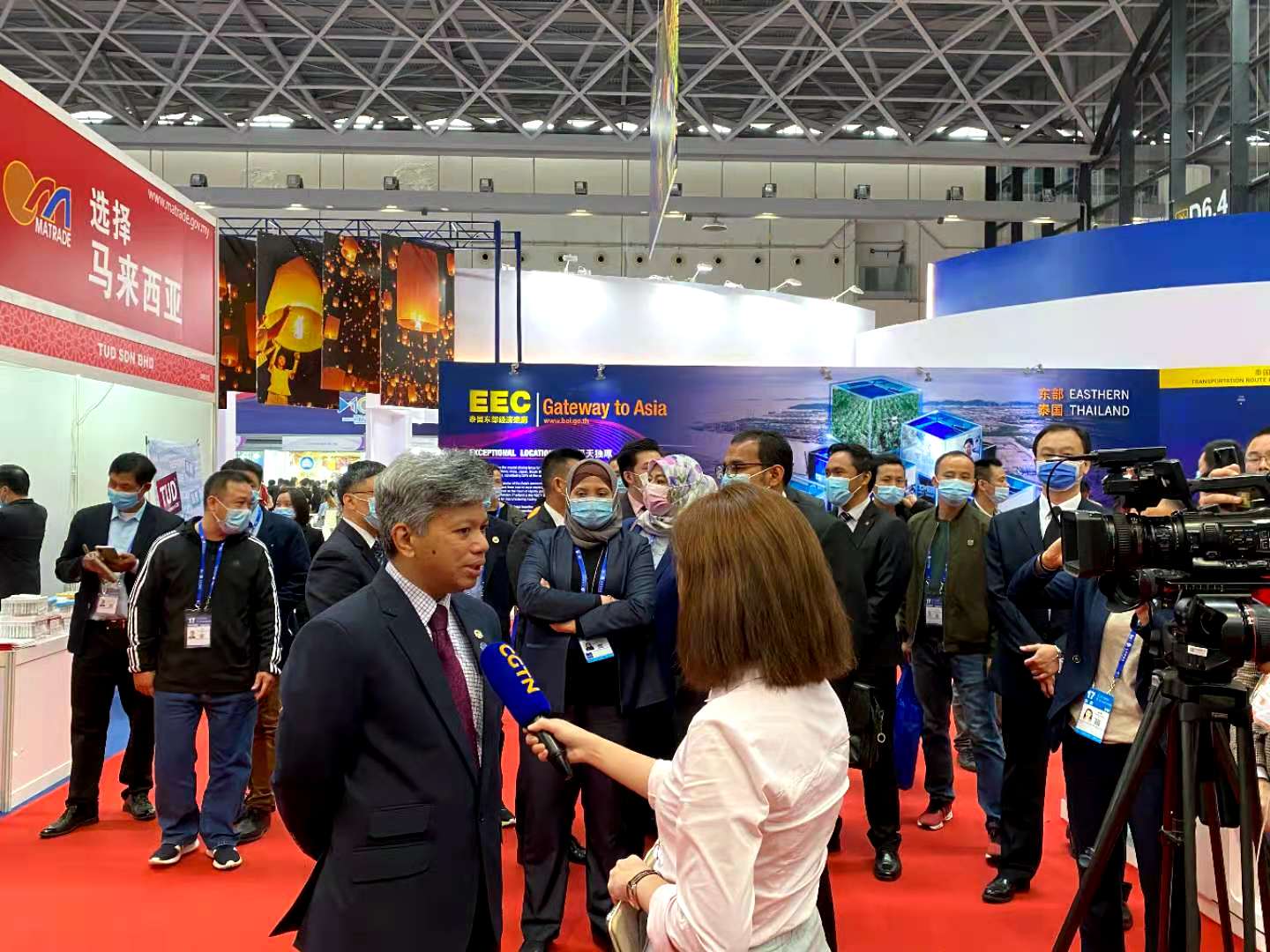
Malaysian Ambassador to China Raja Nushirwan Zainal Abidin is receiving a CGTN interview at at the 17th China-ASEAN Expo in Nanning, capital of south China's Guangxi Zhuang Autonomous Region. /CGTN
Malaysian Ambassador to China Raja Nushirwan Zainal Abidin is receiving a CGTN interview at at the 17th China-ASEAN Expo in Nanning, capital of south China's Guangxi Zhuang Autonomous Region. /CGTN
How purposeful is RCEP?
After eight years of negotiations, the regional comprehensive economic partnership (RCEP) was signed two weeks ago on November 15.
According to The Economist, of the $2.3 trillion in goods flowed between RCEP signatories in 2019, 83 percent passed between those that already had a trade deal. Also, ASEAN already has a free trade agreement with China, and a combined free trade agreement with Australia and New Zealand.
Still, Malaysian Ambassador to China Raja Nushirwan Zainal Abidin is positive Malaysia will benefit from this deal.
"There's this issue of helping out the SMEs, because if you think about it, the utilization rate of FTA is not as high as it could be. So what the RCEP does, among others, is to also streamline all of these. It becomes simplified, so the costs of doing business for SMEs will also be reduced," Nushirwan told CGTN.
For Adam Bralczyk, Polish consul-general in Guangzhou, RCEP is "symbolic" as much as it is a sign of trust between China and ASEAN countries.
"This is very important to signify not only to the region, but to the world that the economic recovery in this particular region can contribute to the recovery of the world," he told CGTN.
Bralczyk went on to say that the significance of RCEP may not be in its substance, but "it's significant as a symbol of progress."
"Ten years ago when a FTA between China and ASEAN was signed, we lived in different economical realities. When we look at agreements, especially those that were negotiated for a long time, we shouldn't fall into the old trap of thinking that this agreement is business as usual, because the world now is not business as usual. We need to see visible steps of our cooperation," he said.
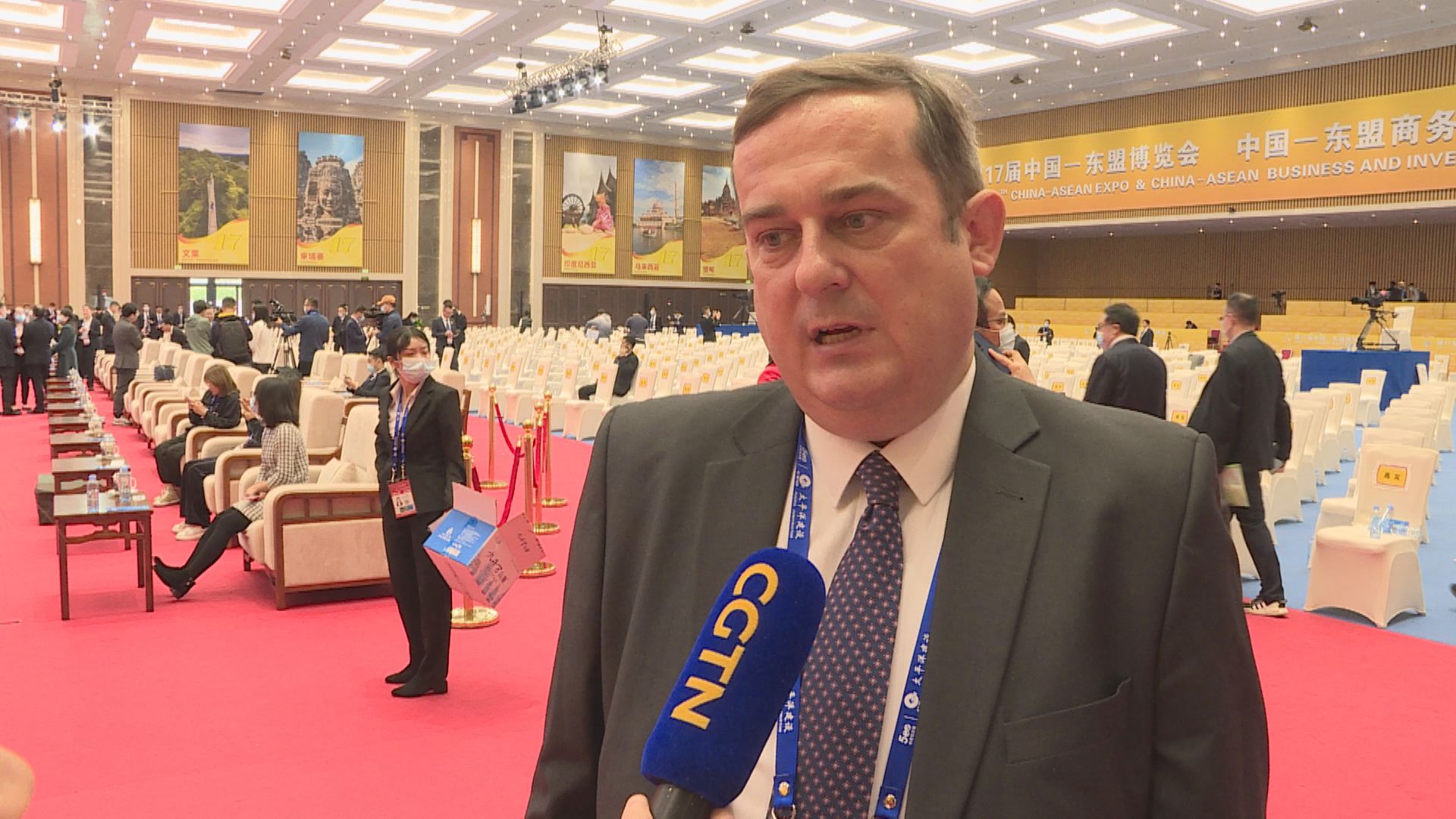
Polish Consul-General in Guangzhou Adam Bralczyk said RCEP is symbolic as much as it is a sign of trust between China and ASEAN. /CGTN
Polish Consul-General in Guangzhou Adam Bralczyk said RCEP is symbolic as much as it is a sign of trust between China and ASEAN. /CGTN
Bralczyk added that countries involved need to be convinced that RCEP is beneficial for them.
"A long time ago, ships were leaving harbors to conquer markets. Why should it be easy now? Great things come at a great cost. We have to realize that and work hard on this. It's not surprising that some countries see things differently. This is a multilateral framework," he said.
Meanwhile, on potential impediments in fully realizing the benefits of the deal, Xu Ningning, executive president of China-ASEAN Business Council, cited the different stages of economic development and openness among member states.
"There needs to be a basic consensus to, on one hand, open up markets but at the same time take care of each member state according to global economic changes. Our end in mind should be that of regional cooperation," Xu told CGTN.
Muhammad Irfan, trade and investment counselor, Consulate General of Pakistan in Guangzhou, opines RCEP is one of the breakthroughs in international trade, and believes trade will enhance many more folds.
"Information age, digitalization... They can learn from each other's experiences. And people-to-people movement will be free, like in the European Union. These kinds of agreements always bring fruitful results for the local people, poverty alleviation, joining of technology transfers," Irfan told CGTN.
Exhibitors say they ran out of goods fast
The 17th CAEXPO had a planned exhibition area of 104,000 square meters and featured 5,400 physical booths from 1,668 companies.
BOH Tea, a household tea maker from Malaysia, is a second-time participant. BOH has been making teas since 1929. But it only entered the Chinese market 90 years later, in 2019.
03:19
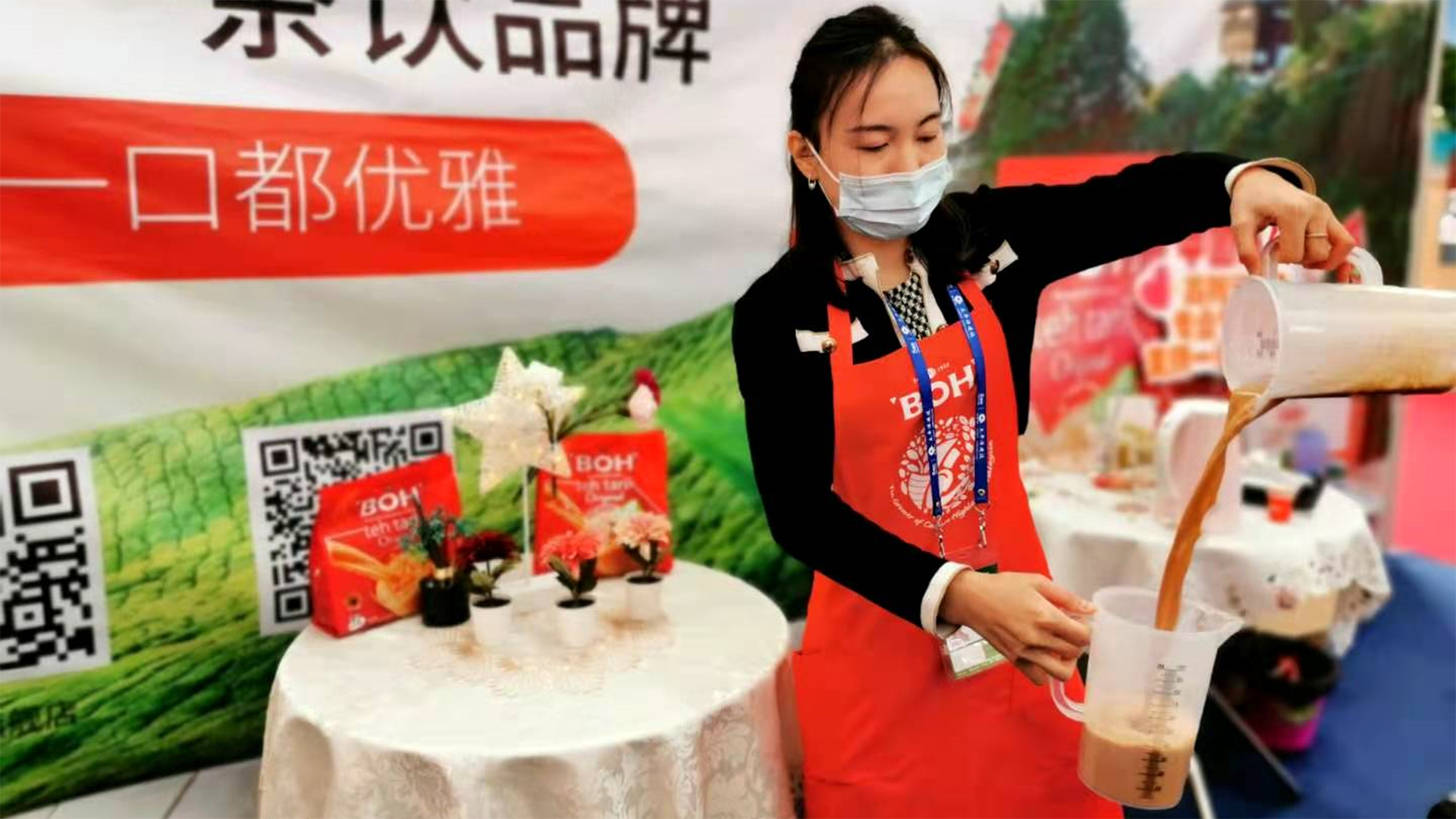
Sally Lin Jingyun, business development director of Boh Plantations, told CGTN that the brand has opened a flagship store on TMall this year.
"And within this half year, we have already achieved our sales target for the entire year. So we have a very good potential market in China," she told CGTN, adding that Chinese consumers like healthy products with less sugar and calories. "But taste is still very important. If the taste is not good, there will be no repeated purchase."
Meanwhile, coffee products were aplenty at the CAEXPO.
Dongxing Yuepinhui Trade has been distributing Vietnamese coffee to China for 10 years. "Coffee sales in China, in absolute amount, are 10 times higher than that of Vietnam," said General Manager Zhu Shenghui.
"We used to only sell instant coffee. But Chinese consumers today are multi-layered. Now, we have a variety of series for Chinese consumers to choose from. Our recently launched drip coffee targets the higher-end, white-collar market," Zhu told CGTN.
For Lin Benxin of Auram Vietnam who distributes Vietnamese coconut powder, online-offline integration is the key in doing well in China today.
"We still sell online... But times are tougher now so I have to come out myself to promote the brand and sell," Lin told CGTN. The company's coconut powder can be consumed on its own, or as an ingredient in coffee, milk tea or curry.
"Through expos like these, we hope to increase our sales channels and customer base, reaching out more to hotels and restaurants; as well as to markets beyond border countries," he said.
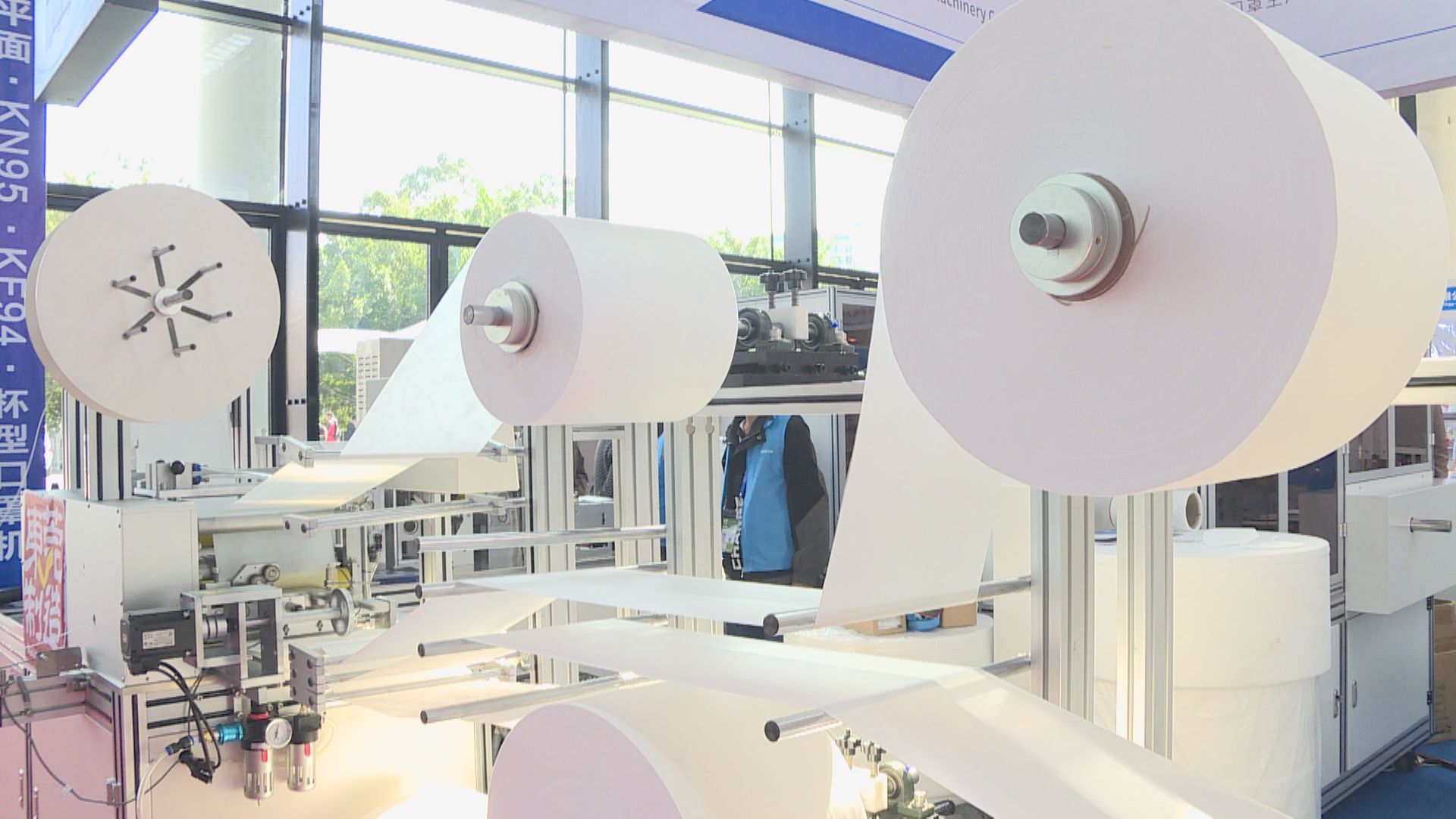
On the flip side, Chinese enterprises, too, seek to further penetrate the ASEAN market at the China-ASEAN Expo. /CGTN
On the flip side, Chinese enterprises, too, seek to further penetrate the ASEAN market at the China-ASEAN Expo. /CGTN
Chinese companies from various industries are also vying to further penetrate the ASEAN market of about 650 million people.
Zhao Sheng, general manager of Dongguan Mimumi Auto Machinery, said his company has brought along its latest independently developed machine which is able to produce 300 masks in one minute.
"We participated in this expo to allow ASEAN to know us, but at the same time to understand ASEAN's market needs and which direction should we take," Zhao said.
"We find that there is (still) a huge need from ASEAN for machines that make epidemic prevention materials. Their production capabilities are slightly weaker and still need China's technology."
Due to China-U.S. trade tensions, some U.S. companies may be looking at shifting production bases to ASEAN. "So we, too, are now looking at ASEAN," added Zhao.

